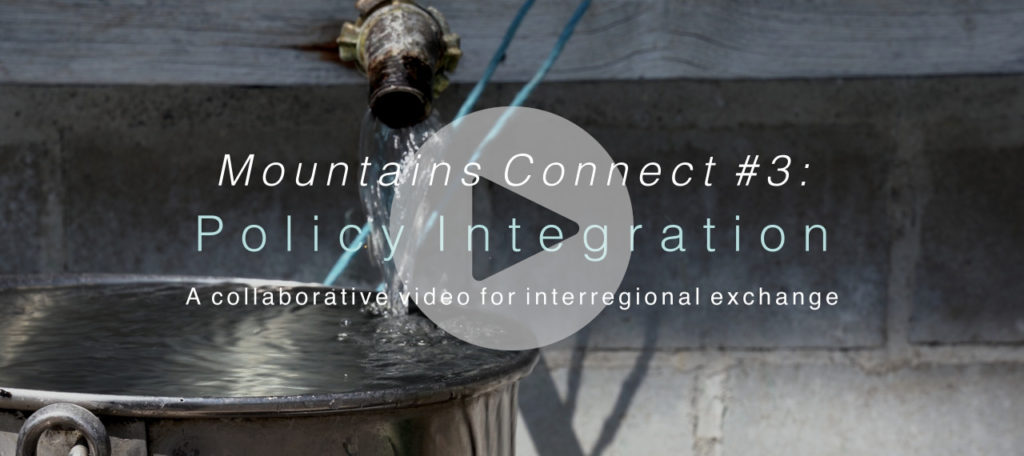Just as the concept and practice of sustainable development has evolved since the late 1980s, the sectoral orientation of sustainable mountain development has changed over time. The Mountains Connect #3 video dives into this important context and provides example from mountain regions around the world.
The integrative dimension of sustainable development remains at its core. While key sectors such as nature conservation, agriculture, and tourism continue to be important, climate change adaptation has assumed a central place and now appears as a cross-sectoral driver in its own right. Means to ensure sectoral integration vary widely, ranging from simple reference to the integrative nature of sustainable mountain development to the establishment of cross-cutting working groups or special projects.
Nature, tourism, transport and culture as priority areas are cited in each mountain range governance initiative, followed by agriculture, forestry, and energy. This does not mean that all of these are actually implemented everywhere (even in those initiatives that do have implementation), as there are clear trade-offs between breath, depth, effectiveness, and political feasibility.
Script & CAST
Jörg Balsiger, Professor of Geography & Environment, University of Geneva
Policy integration is sometimes called the “holy grail” of public administration, the goal every government pursues but none ever manages to fully achieve. There is some truth to this. Long-standing sectoral tensions such as between nature protection and local economic development continue to undermine sustainable development in many places.
At the same time, much progress has been made including in mountain areas. One reason for this is that most of today‘s pressing policy issues, especially climate change adaptation, go beyond traditional sectors. Another reason is that mountains are concrete places where policy issues converge. So, what are the key areas of work in sustainable mountain development and how do different sectors interact?
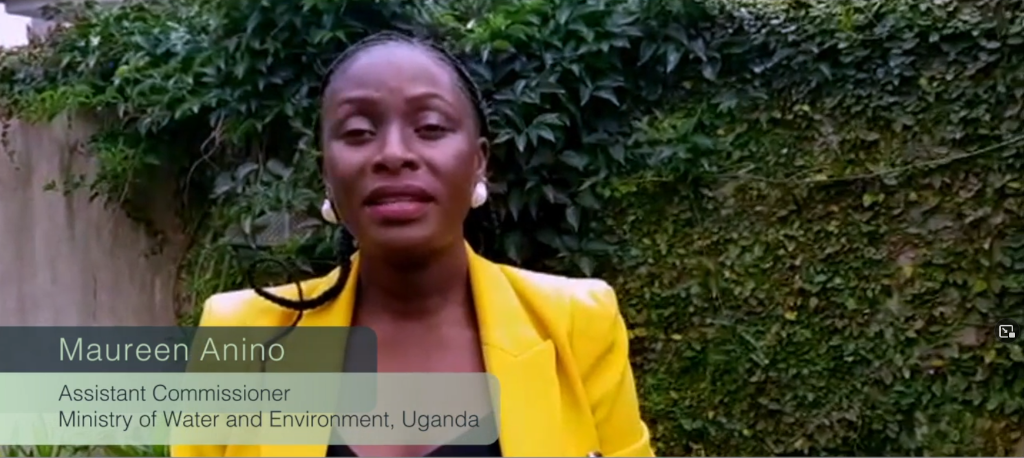
Maureen Anino, Assistant Commissioner, Ministry of Water and Environment, Uganda
In the East African Region, the key sectors that are critical and play a significant role in socio-economic development in the region in the mountain areas, are agriculture because of the high fertility of the mountain regions. The mountains are food baskets in the region. The second sector that is important in sustainable mountain development is tourism, because of the rich biodiversity in the mountains. And the third sector which is important for sustainable mountain development in the region is forestry. Most of the mountains in the East African Region are covered by dense natural forest which provide critical goods and services in the region.
Nakul Chettri, Regional Programme Manager, International Center for Integrated Mountain Development (ICIMOD)
In the Hindu Kush Himalayan Region, the sustainable mountain development sectors are, number one, food and nutrient security, the second one is environmental security, and the third one is economic opportunity for livelihood development.
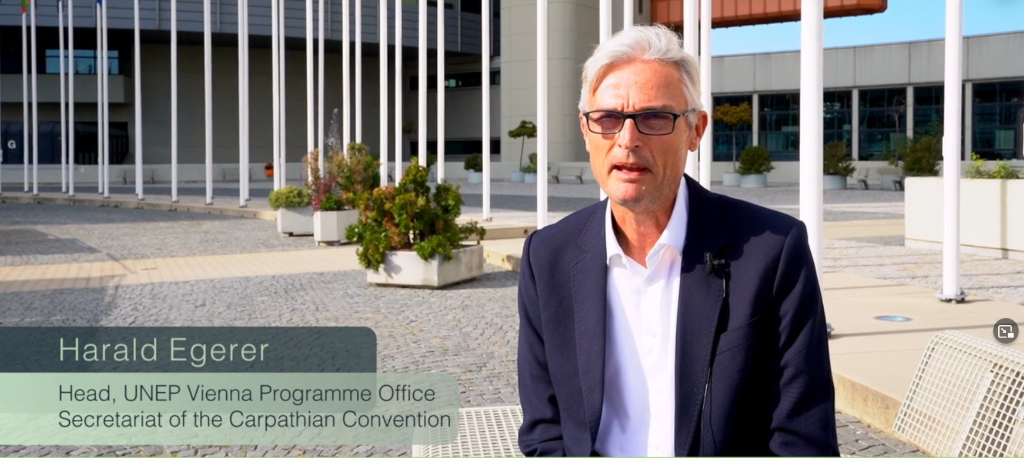
Harald Egerer, Head, UNEP Vienna Programme Office, Secretariat of the Carpathian Convention
In our mountain range, the Carpathians, the need is for integration of different sectors, multisectoral cooperation in a holistic manner. That means we are talking about biodiversity integration, with land use, with transport, with agriculture, with tourism, with science, with climate change and so on.
Joseph Salukvadze, Professor of Human Geography, Tbilisi State University
In the Caucasus region, the key sectors in sustainable mountain development are climate change, biodiversity, and economic development, more precisely tourism development. However, there are a few other sectors, like forest management and water issues, which are also very important.
Maureen Anino
An example of a sector that contributes significantly to socioeconomic transformation in the region but also leads to degradation in the mountains is agriculture. The practice of agriculture, much as it contributes to the development in the region, also leads to high cases of degradation of the mountains. However, there are certain sectors that also contribute to the conservation of mountains, and one of these is the tourism sector through activities like ecotourism which are non-consumptive. This contributes to conservation in the mountain areas.

Joseph Salukvadze
The sectors are very much interlinked. For example, the development of the sustainable tourism sector influences other economic sectors, too, like agriculture, like building and construction, infrastructural development and so on. On the other hand, we have sort of negative influence, for example projects of large energy hydro plants they may somehow influence negatively the ecological situation in the region, also causing the resettlement of the population.
Jörg Balsiger
There are two different but complementary ways of analyzing and promoting policy integration in mountain range governance. Both are valid starting points. The first is where mountains are seen as a single space that corresponds with the prevailing definition of the mountain range. Here, the space defined by a certain problem, for instance forest degradation, is aligned as closely as possible with the space for which a solution to that problem is sought. Multiple problem spaces coexist, creating a fuzzy border for the mountain range.
First approach to policy integration
Mountain range conceived as single space
- Problem and solution spaces for specific issues are transnational, multiple, and overlapping
- Issues are addressed by actors organized at the level of the mountain range
- Policy integration happens through these actors
Maureen Anino
There are mechanisms in place to ensure that policy integration is addressed in the East African region. So, at the regional level, we have the East African Community, which is an intergovernmental organization in the region that brings together the different countries in the region. They have the East African Climate Change Policy, they also have the East African Protocol on Environment Resources, and also the East African Transboundary Act.
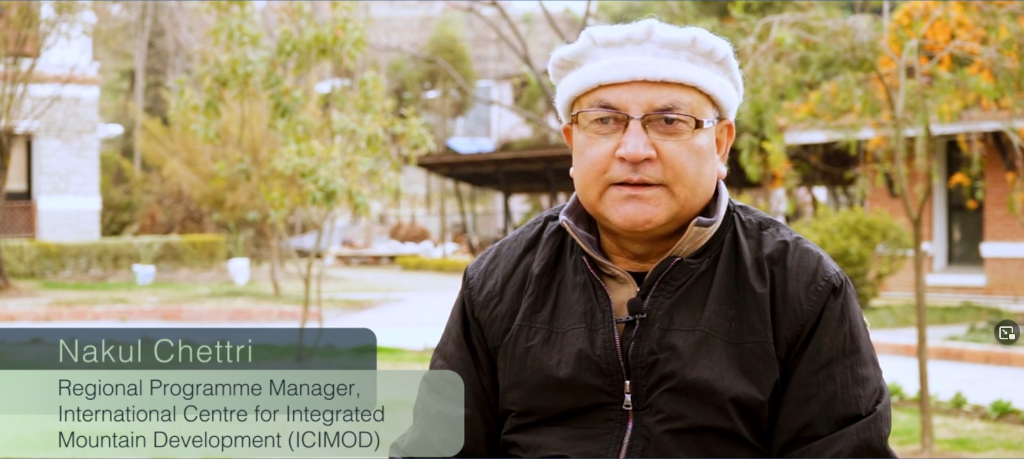
Nakul Chettri
In the Hindu Kush Himalayan region, there is no policy mechanism at the regional scale to say, but there are options available, where the customization of global multilateral agreements such as the Convention of Biological Diversity or UNFCCC [United Nations Framework Convention on Climate Change] are being customized at the regional scale, where some of the agendas and targets of these conventions are being implemented at the regional scale.
Jörg Balsiger
In this approach, sector-specific issues are addressed by organizations at the level of the mountain range. Examples include thematic working groups supporting international treaties, regional NGOs, or regional scientific collectives. Policy integration happens through the interaction of these rangewide entities. New cross-cutting policy challenges, such as climate adaptation, can and do lead to the establishment of dedicated organizations.
Joseph Salukvadze
The network which we created, which is the Scientific Network for the Caucasus Mountain Region, tries to fill gaps in policy integration as much as it is possible. And for that we use different mechanisms, such as workshops, seminars, the exchange of ideas, but we also elaborated the Caucasus Research Agenda.
Jörg Balsiger
Second, a mountain range can be seen as a collection of jurisdictions. These can be entire countries or only certain regions. Here, the entry point is the mountain area of a particular jurisdiction, regardless of the delineation of the mountain range. Accordingly, policy integration principally occurs at that level, often under the responsibility of the corresponding national government and its relevant mechanisms. Transboundary coordination, where necessary, then proceeds through the institutions of mountain range governance.
Second approach to policy integration
Mountain range as a collection of jurisdictions
- Policy integration occurs at the level of the individual jurisdiction, often under national governments
- Transboundary coordination proceeds through institutions of mountain range governance
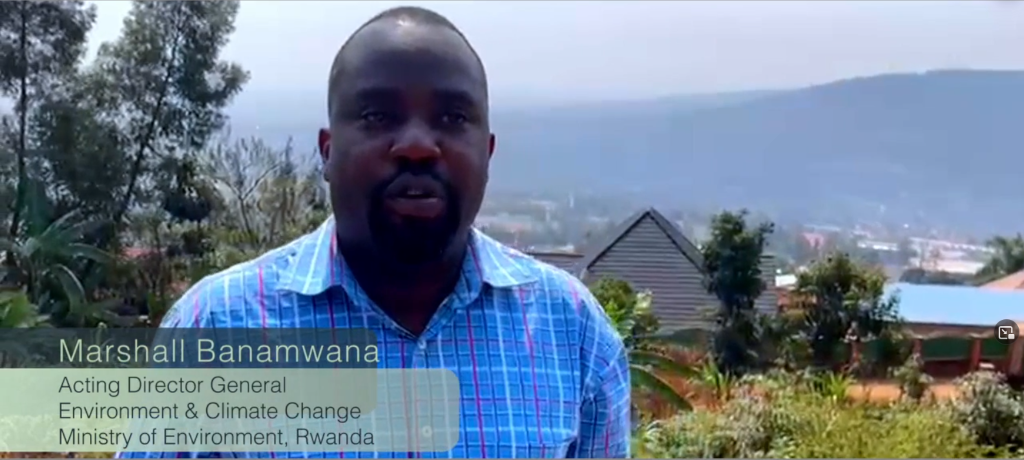
Marshall Banamwana, Acting Director General, Environment & Climate Change, Ministry of Environment, Rwanda
An example of institutions which promote policy integration I can say is the Ministry of Environment, which works as an interface between all Ministers in East Africa responsible for environment and climate change.
Maureen Anino
Sometimes the policies that are in place, for example in Uganda – the policy addresses general issues on environment and natural resources and is not specific to mountains. Therefore there is a gap. The East African Protocol on Environment and Natural Resources also addresses issues of environment and natural resources in general and therefore, there is a need for us in the region to come up with policies that specifically address issues of mountains.
Jörg Balsiger
Successful policy integration is an ongoing task, where the emphasis is on the outcome and the process. In order for that to be possible, the right mechanisms need to be in place.
Nakul Chettri
ICIMOD played an important role to come up with a science-based assessment report called HIMAP [Hindu Kush Himalayan Monitoring and Assessment Programme], and based on that HIMAP report we could facilitate the HKH Call to Action, which was discussed, agreed, and signed by our regional member countries. So that is the instrument, where institutional processes and platforms are created and a mechanism was developed.
Joseph Salukvadze
There are several instruments for policy advocacy but I have to emphasize for example the Caucasus Mountain Forum which collects a lot of people from around the region as well as other countries, they can exchange different ideas, and also there are stakeholders like government members, who can also listen and participate in the discussions and this is a very good opportunity to promote policy advocacy.
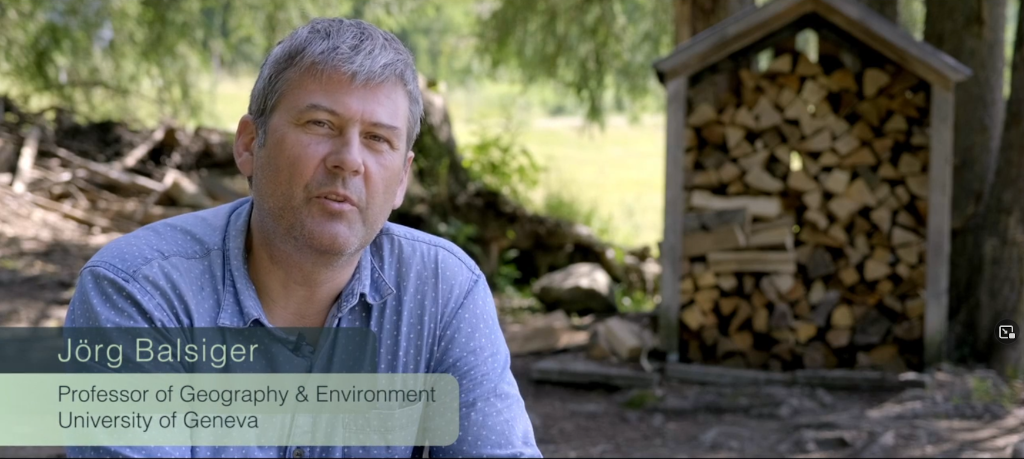
Jörg Balsiger
Where a mountain range is seen as a single space, regional actors play a key role and transboundary dynamics are readily addressed. A territorial approach to public policy also tends to prevail, which in turn favors policy integration. However, regional actors may lack strong links to national and local policy making and implementation. Where a mountain range is seen as a set of jurisdictions, policy integration is the task of those already in charge of relevant policy-making structures.
On the other hand, transboundary challenges are less prioritized and administrative fragmentation can undermine integration efforts. Ultimately, there is no one right way to pursue policy integration. The challenge is to know how much policy integration is necessary and feasible under which circumstances. So long as the question is being addressed, policy integration is on the right track.
Key lessons
1. Where a mountain range is seen as a single space:
- Key role for regional actors
- Recognition of transboundary dynamics
- Territorial approaches to public policy
2. Where a mountain range is seen as a set of jurisdictions:
- Policy integration occurs through existing structures
- Transboundary issues are less readily recognized
- Administrative fragmentation may jeopardize policy integration
organizations appearing in the video
- Ministry of Water and Environment, Uganda (-> link)
- International Centre for Integrated Mountain Development (ICIMOD) (-> link)
- UNEP Vienna Programme Office – Secretariat of the Carpathian Convention (-> link)
- Department of Human Geography, Ivane Javakhishvili Tbilisi State University, Georgia (-> link)
- Ministry of Environment, Rwanda (-> link)

